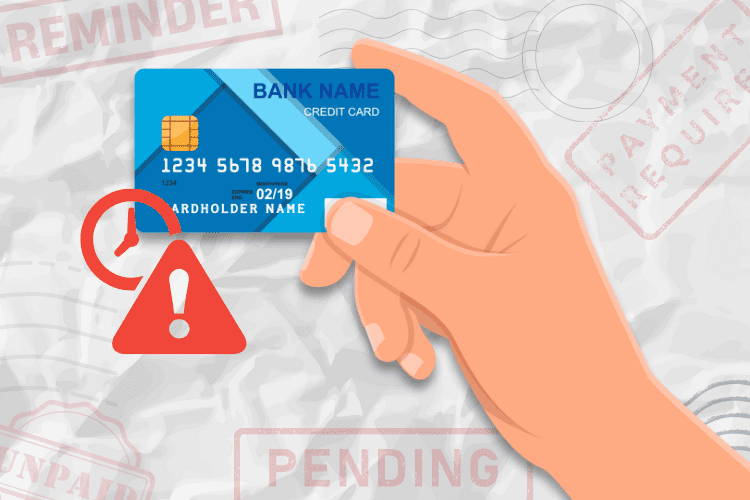How Many Savings Accounts Do You Really Need?

If you’ve started your journey towards saving for that rainy day or emergency fund, great for you. You’re on the right track since saving money is never a bad thing. But, if you’ve ever wondered how many different savings accounts you should have, you’re not alone. Chances are you may get a different answer depending on who you ask.
The short answer is the number of savings accounts you have depends on your personal goals. That’s it. There’s no one-size-fits-all regarding saving since each individual’s needs differ, but we’ll explain further below.
Making Sense of Having Multiple Accounts
No one can tell you how many separate accounts you should have, but knowing your personal goals and what you’re working towards can help give you the answer you need. Some experts would recommend having at least four different accounts: two checking accounts and two savings accounts.
One checking account is recommended for paying monthly bills, and the other for spending on your wants. One savings account is dedicated to spending in emergencies, and the other is to your financial goals. While that’s the general rule, here’s where it gets tricky.
Not all goals are classified the same. Financial goals could be categorized as short-term or long-term goals. In that case, you may want to have three savings accounts: one for the emergency fund, one for the short-term goals, and one for the long-term goals. We could get even trickier than that. Rather than long-term or short-term goals, each goal could have its own account. The benefit of having an account attached to each goal is that you’ll be better able to keep up with the status of that goal.
Here are some examples of goals to have a savings account for:
- Emergency fund
- New car
- New home
- Vacation(s)
- Wedding
- College
- Business ventures
- Retirement
- Home improvement projects
Pros and Cons of Having Multiple Savings Accounts
Here are some great and not-so-great reasons for having multiple savings accounts:
Pros
- Quickly Monitor Savings Progress: If you have multiple goals (long or short-term) and each goal is represented by a separate account, it gives you a better glimpse of where you stand with each goal.
- Better Interest Rates: Not all banks offer the same rates, and spreading your accounts across banks could work to your benefit if it means taking advantage of the best interest rates. Never think that all of your banking has to be at one bank.
- New Member Incentives: Some banks offer special incentives to get you to open an account with them. If some of these incentives include extra cash in your account, that could be a great way to grow your savings quickly.
- Stay FDIC-protected: Depending on how large a savings you’re trying to grow, you’ll want to ensure you’re within the walls of FDIC coverage. FDIC insurance coverage protects your money up to $250,000 per depositor, per insured bank. So, if you’re attempting to grow savings beyond those limits, having multiple accounts between multiple banks may be wise to protect your money.
Cons
- Confusion: If you’re not one for being organized, having multiple accounts could become confusing since it requires more of your attention to keep up with it. You don’t want to forget about any accounts! However, a mobile app could possibly help manage all of that to alleviate this problem.
- Fees: Multiple accounts could trigger additional fees depending on where you bank. Some banks require a minimum balance or maintenance fee, meaning they could charge you fees if you exceed a specific limit. Also, be on the lookout for excess withdrawal fees or transfer fees. If you plan to withdraw from your account often or make regular transfers to external accounts, make sure your bank won’t charge you for it!
- Higher Interest Rates Elsewhere: Savings accounts are one area of your life where you welcome higher interest rates. Some banks have tiered rates, meaning you earn higher rates as your balance increases, so having multiple savings accounts could keep you below the threshold you need to be to get the highest rates.
How To Manage Multiple Accounts
Having multiple savings accounts can be significant and valuable to your goals. However, it’s essential to know how to manage multiple accounts.
The first thing you want to do is have a budget. Within that budget is the key to knowing your financial goals and how much money you need to put toward those goals. Once you know that, it’s a matter of determining the best way to manage your money, depending on your personal preference.
- If you prefer more of a hands-on approach, you may use a spreadsheet to record the status of each account regularly. This should be done at least every month.
- If you’re more technical, you could evaluate the various apps that could help you manage your accounts in one place. Pick the app that works best for your needs.
- Most banks also have an online presence that allows you to create an online account. You can always keep track of what’s happening with your account.
- If depositing into the account or forgetting you have an account is an issue, I highly recommend automating your deposits.
The Bottom Line
Having multiple savings accounts can help you achieve your overall goals. How many you have is totally up to you. I recommend you start where you are. Make sure you’re saving something. You don’t have to open multiple accounts at one time. As the opportunities to expand become available based on how much money you can put towards monthly savings, grow your accounts — based on what you need.
You know you have too many accounts if you’re struggling with them or don’t have the time to monitor each of them appropriately.
Read More:










